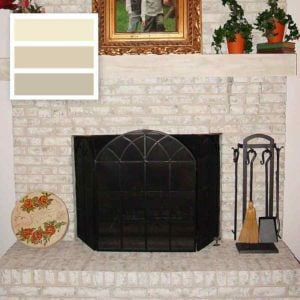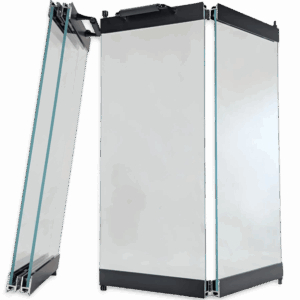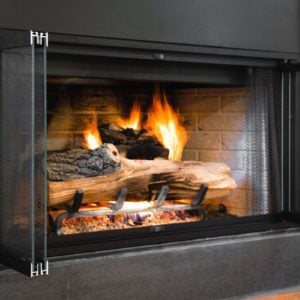Clean and inspect your gas fireplace
Having your chimney swept and your fireplace inspected are activities that many associate as being necessities for wood-burning firepla...


 Replacement Glass Doors
Replacement Glass Doors
 The EZ Fireplace Door
The EZ Fireplace Door
 Fireplace Door Glass Cleaner
Fireplace Door Glass Cleaner
The warmer weather doesn’t always prompt thoughts of sitting in front of a cozy fire, but if you are considering adding or making a change to a fireplace in your home, now might be the right time to start thinking about that new or improved wood-burning or gas fireplace.
If you have a desire to add a fireplace that is more eco-friendly before cooler fall temperatures return, you have some decisions to make. Many people prefer wood-burning fireplaces. They love the crackle if the wood as it burns, the scent and the ambiance.
There’s nothing like building a fire in your fireplace, listening to it crackle as it burns the night, and enjoying its warmth. Sounds relaxing, right? Well right now there is a debate going over just how “carbon neutral” firewood is for those spending time in front of a fire. What does “carbon neutral” mean? If something is carbon neutral, it basically means it doesn’t increase the amount of carbon dioxide already in the air, or add to the carbon footprint of your home.
Still, firewood is considered more “eco-friendly” than natural gas primarily because it is a renewable resource, but the smoke it creates is still considered a pollutant. Some believe the smoke caused by burning wood leaves a smaller footprint than a tree dies and rots naturally, and that’s why burning wood can be considered carbon neutral.
Important to note, however, that an improperly maintained wood fireplace can actually pull heat from your room, making your home less energy efficient, which will increase that carbon footprint you may be hoping to reduce. If your fireplace and chimney aren’t well sealed, the heat escapes from your home. So be sure to keep your chimney clean and check it regularly to ensure it is well sealed.
Are Gas Fireplaces Eco-Friendly?
Gas fireplaces, in many cases are decorative. You shouldn’t expect a gas fireplace to heat an entire room. The convenience that comes with a gas log fireplace is wonderful. Gas fireplaces are easy to start, in fact, many can be turned on with the flip of a switch. They also come in a variety of designs, suited to match the décor of most homes.
When considering how eco-friendly gas fireplaces are, gas fireplaces burn fuels like natural gas or propane, both of which are fossil fuels, and emit fumes into the air. The emissions and output from gas fireplaces are still relatively low because this type of fireplace is normally used for special occasions, and not daily.
When you step back and look at the options, wood-burning fireplaces could be viewed as more eco-friendly.
Yet if you have a wood-burning fireplace that you don’t use all that often because of the extra care it requires, a gas fireplace could be a great option for your home.
No account yet?
Create an Account